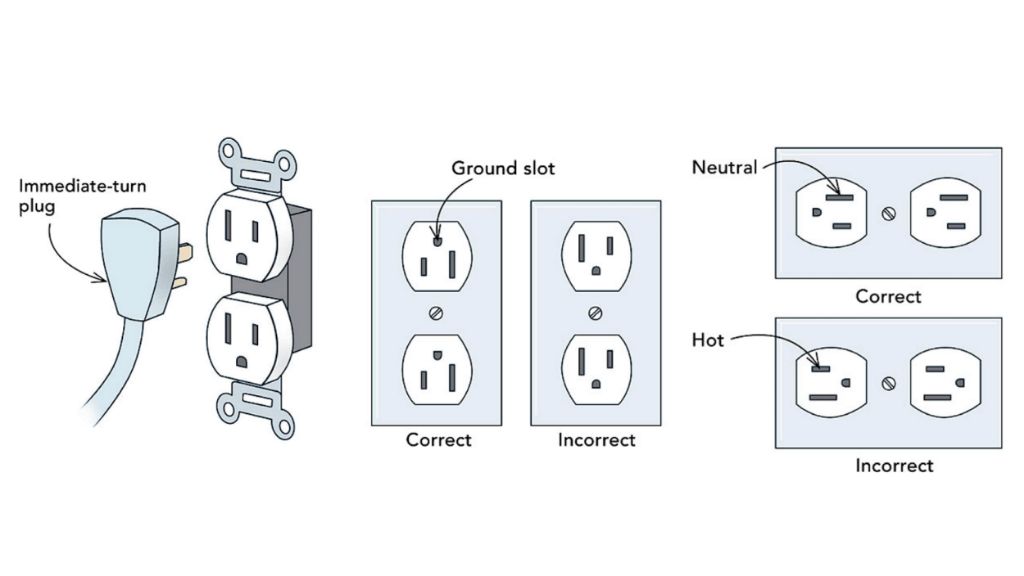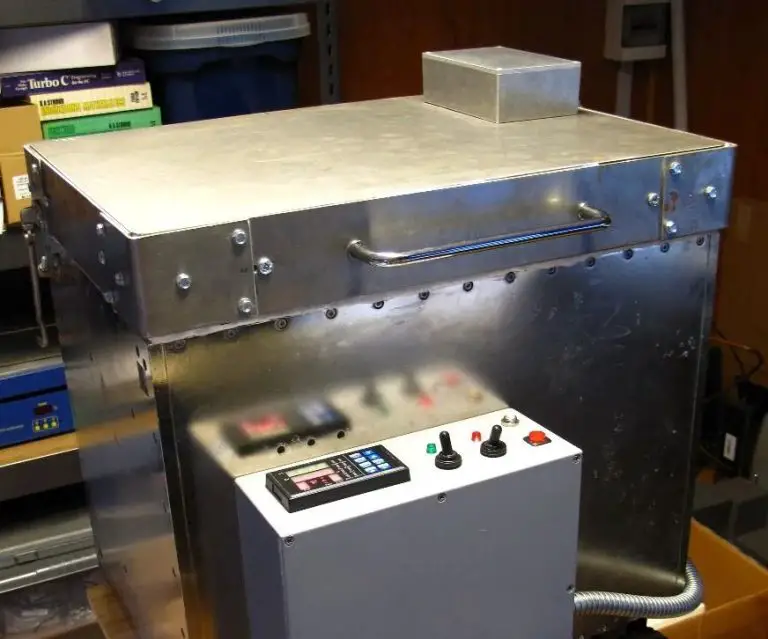What Is Nema 6-20 For?
NEMA 6-20 is a type of electrical connector plug and outlet designed for 240 volt, 20 ampere circuits. It is rated for up to 240V and 20A, meaning it can deliver up to 4800 watts of power. The plug has three blades – two vertical flat blades for power and one horizontal U-shaped blade for the ground pin. The 6-20 designation references the NEMA ratings system for plugs and outlets.
NEMA 6-20 connectors are commonly used for higher power equipment and appliances such as heaters, motors, large air compressors, and other heavy-duty applications that require more than standard 120V 15A circuits can deliver. They allow safe connections for these types of 240V loads. Key specifications for NEMA 6-20 include:
- Voltage: 250V AC
- Current: 20A
- Number of wires: 3 (Line 1, Line 2, Ground)
- Number of Poles: 2 (Line 1, Line 2)
In summary, the NEMA 6-20 plug and outlet provides a 240V 20A connection for powering larger equipment and appliances safely and efficiently.
NEMA Ratings System
NEMA (National Electrical Manufacturers Association) is a standards body that develops specifications for electrical products used in North America. NEMA connectors are power plugs and receptacles used for AC mains electricity that conform to NEMA standards (https://en.wikipedia.org/wiki/NEMA_connector).
The purpose of the NEMA ratings system is to standardize electrical plugs and outlets to ensure safety and compatibility. NEMA standards were first developed in the early 1900s to address the lack of standardization of electrical components at the time (https://www.plugmuseum.com/nema-standards-history/).
Key differences between NEMA plugs and receptacles include:
- Plugs have protruding blades to insert into a receptacle
- Receptacles have slots to receive the blades of a plug
Some common NEMA configurations beyond NEMA 6-20 include:
- NEMA 5-15 – Standard 120V household outlet
- NEMA 5-20 – 120V outlet for higher amperage devices
- NEMA 14-50 – 240V outlet for electric stoves/ovens
NEMA 6-20 Specifications
The NEMA 6-20 plug and receptacle has the following key specifications:
- Voltage Rating: 250V AC
- Current Rating: 20 Amps
- Wiring: 3-wire (Line 1, Line 2, Ground)
- Wire Size: 12 AWG minimum
- Phase: Single
- Frequency: 60 Hz
- NEMA Configuration: 6-20
- Receptacle Orientation: Vertical
- Dimensions:
- Plug: 2.75″ H x 1.6″ W x 2.56″ D
- Receptacle Face: 1.62″ H x 1.62″ W
- Receptacle Box Depth: 1.62″ D
- Number of Poles: 2
- Polarized: Yes
- Grounding: Equipment Grounding Conductor
The 6-20 designation indicates it’s rated for 20 amps at 250 volts AC power. It has a two pole, three wire configuration with two current carrying conductors (Line 1 and Line 2) and an isolated ground conductor. The plug has a horizontal neutral blade, vertical hot blade, and U-shaped ground pin.
Applications and Uses of NEMA 6-20
The NEMA 6-20 outlet is commonly used for powering commercial and industrial equipment that requires a 240V, 20 amp electrical supply. Some of the key applications and uses of NEMA 6-20 include:
Commercial and Industrial Equipment – NEMA 6-20 is frequently used to power various types of commercial and industrial equipment that require high voltage/amperage, such as machinery, tools, lighting, HVAC systems, and appliances. It provides more power capability than standard 120V outlets.
High Power Machinery – Industrial facilities often utilize NEMA 6-20 to operate high power machinery like metal cutting saws, industrial air compressors, conveyor systems, hydraulic lifts, and other heavy-duty equipment. The 20 amp circuit provides sufficient power for motors and machinery.
Electric Vehicle Charging – NEMA 6-20 outlets are commonly installed for Level 2 electric vehicle charging stations. The 240V supply can charge EVs faster than standard 120V outlets. Compared to other NEMA plugs, the 6-20 balances cost and charging speed.
Overall, the high voltage and current rating make NEMA 6-20 well-suited for commercial/industrial equipment demanding significant electrical power. It fills an important niche between standard wall outlets and very high amperage connections.
Advantages over Other NEMA Configurations
The NEMA 6-20 outlet offers several advantages over other common NEMA outlet configurations:
First, the NEMA 6-20 has a higher amperage capacity of 20 amps compared to 15 amps for a standard NEMA 5-15 outlet. This allows higher power appliances like electric vehicle chargers to utilize the full capacity of the circuit.
Second, the NEMA 6-20 incorporates safety features not present on some other NEMA outlets. The ground pin ensures all connected devices are properly grounded, reducing the risk of shock. The neutral blade is wider than the hot blades, preventing reverse polarity connections.
Finally, the NEMA 6-20 is designed and constructed to be extremely durable and rugged. The receptacle housing is made of sturdy thermoplastic, and the brass contacts are designed for thousands of insertions. This makes the NEMA 6-20 well-suited for exposed outdoor or garage installations.
In summary, with its higher amperage rating, safety features, and rugged design, the NEMA 6-20 offers compelling advantages for many applications compared to other common NEMA configurations.
Wiring and Installation

Properly installing and wiring a NEMA 6-20 outlet is critical for safety and optimal performance. This type of outlet requires a dedicated 20-amp circuit and is wired using 12 AWG copper wire. The hot wires are 10 AWG and the neutral and ground wires are 12 AWG.
The ground wire must be properly connected to an earth ground, such as a ground rod or building steel. This provides a path for electricity to follow in case of a short circuit or electrical fault. Proper grounding is essential to prevent electric shock.
While not required by code, GFCI (ground fault circuit interrupter) protection is recommended for added safety. A GFCI outlet or circuit breaker protects against electric shock by shutting off power in the event of a ground fault. This adds a layer of protection if electricity leaks through damaged insulation or wires.
Standard circuit breakers provide overcurrent protection for the circuit. A 20-amp breaker should be used to prevent overheating the wires. The breaker will trip if too many loads are connected and drawing excessive current. Proper installation by a qualified electrician is always recommended when wiring any 240-volt outlet.
NEMA 6-20 vs Other Plug Types
The NEMA 6-20 plug is often compared to the NEMA 14-20 plug since they share similar power ratings and applications. However, there are some key differences between the two:
The NEMA 14-20 plug has a rating of 20 amps at up to 250 volts AC for both current-carrying pins. It has a three pin design with two power pins that are vertically oriented, and one round earth ground pin below. The NEMA 6-20, on the other hand, is rated for 20 amps at up to 250 volts AC on one pin, and 20 amps at up to 125 volts AC on the other power pin. It utilizes a three pin design with flat neutral and hot blades side-by-side, and a round earth ground pin below.
The NEMA 14-20 is used more often for higher voltage connections up to 250V for heavy loads. The dedicated neutral pin allows for the full 250V capability. The NEMA 6-20’s split current/voltage ratings on its power pins make it better suited for 120/240V connections, where the lower voltage pin serves as a dedicated neutral. The 6-20 is more commonly used for applications like clothes dryers, ranges, and other household appliances that operate on a 120/240V supply.
So in summary, the NEMA 14-20 can handle more voltage when both pins are fully utilized. But the NEMA 6-20’s neutral pin and uneven voltage ratings allow it to safely accommodate 120V specific loads in 120/240V systems. The 6-20’s lower price and more compact size also make it preferable for general household and RV use where very high voltages are unnecessary.
(Source: https://shop.worldcordsets.com/shop/reference-materials/nema-reference-guide)
Safety Considerations
NEMA 6-20 outlets and plugs carry risks of shock and electrocution if not used properly. It is crucial to follow all electrical codes and standards when installing or using a NEMA 6-20 receptacle.
Only a qualified, licensed electrician should install a NEMA 6-20 outlet, as high voltages are involved. The National Electrical Code and local building codes must be followed when wiring the receptacle and circuit.
NEMA 6-20 delivers 240 volt power, which carries double the amperage of a standard 120 volt household outlet. This increases the risk of serious injury from electrical shock. Proper grounding provides an essential safety barrier.
It is critical to regularly inspect NEMA 6-20 plugs and outlets for any damage before use. Cracks, burned spots, loose parts, or frayed/damaged wiring can indicate an unsafe condition requiring repair by an electrician. Do not use a damaged NEMA 6-20 connection.
Care should be taken to avoid overloading the circuit. Drawing more amperage than the wiring is rated for can lead to overheating and fire. Always follow the amperage limits of both the outlet and any device plugged into it.
Cost of NEMA 6-20
Installing a NEMA 6-20 receptacle and wiring can be an expensive endeavor. The receptacle itself costs between $15-$25. However, the real cost lies in the installation by an electrician. Since NEMA 6-20 requires a dedicated 240V circuit with heavier gauge wiring, running new wires and installing the receptacle professionally can cost anywhere from $100 to over $1000 depending on the complexity of the job.
Factors that affect NEMA 6-20 installation costs include:
- Distance from the main electrical panel – Longer wire runs cost more in materials and labor.
- Accessibility – Installing wiring inside finished walls or ceilings costs much more than running surface-mounted conduit.
- Amperage needs – 20 amp circuits require thicker, more expensive wire than 15 amp circuits.
- Single or three phase – Three phase can quadruple material and installation costs.
- Permitting fees – Most jurisdictions require permits and inspections for new 240V circuits.
To keep NEMA 6-20 wiring affordable, locate receptacles close to the main panel and along routes with easy access. Consider sharing the circuit with other 240V outlets to distribute costs. And be sure to get multiple quotes, as electrician labor fees can vary widely.
Future of NEMA 6-20
With the rise of electric vehicles, NEMA 6-20 outlets are likely to see increased adoption for EV charging, especially for applications that require faster charging than the typical NEMA 5-15 outlet can provide (evdances.com). NEMA 6-20 offers a good middle ground between cost and charging speed that suits many residential and commercial EV charging needs.
NEMA standards are periodically updated to reflect evolving requirements, and it’s possible the specifications for NEMA 6-20 may change in the future. There has been some discussion in EV owner communities about whether NEMA 6-20 provides adequate power delivery for very cold weather charging, so tweaks to the standard could help optimize winter charging rates (reddit.com). However, major changes are unlikely, since backwards compatibility is an important goal of NEMA standards.
Overall, NEMA 6-20 is well-positioned for the future due to rising EV adoption. While the standard may see minor updates, it is likely to remain an attractive option for cost-effective, relatively fast EV charging in residential and commercial settings.


